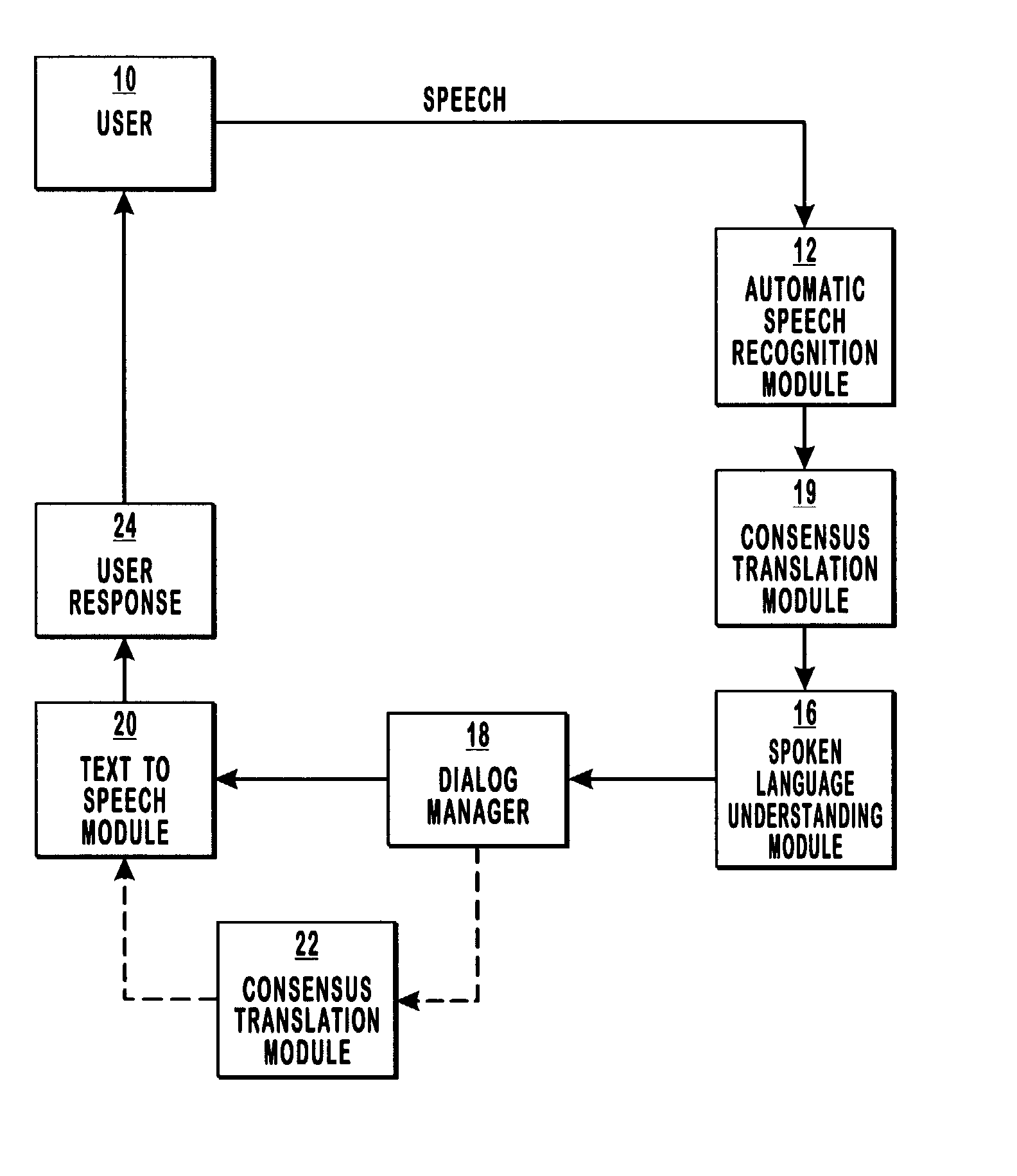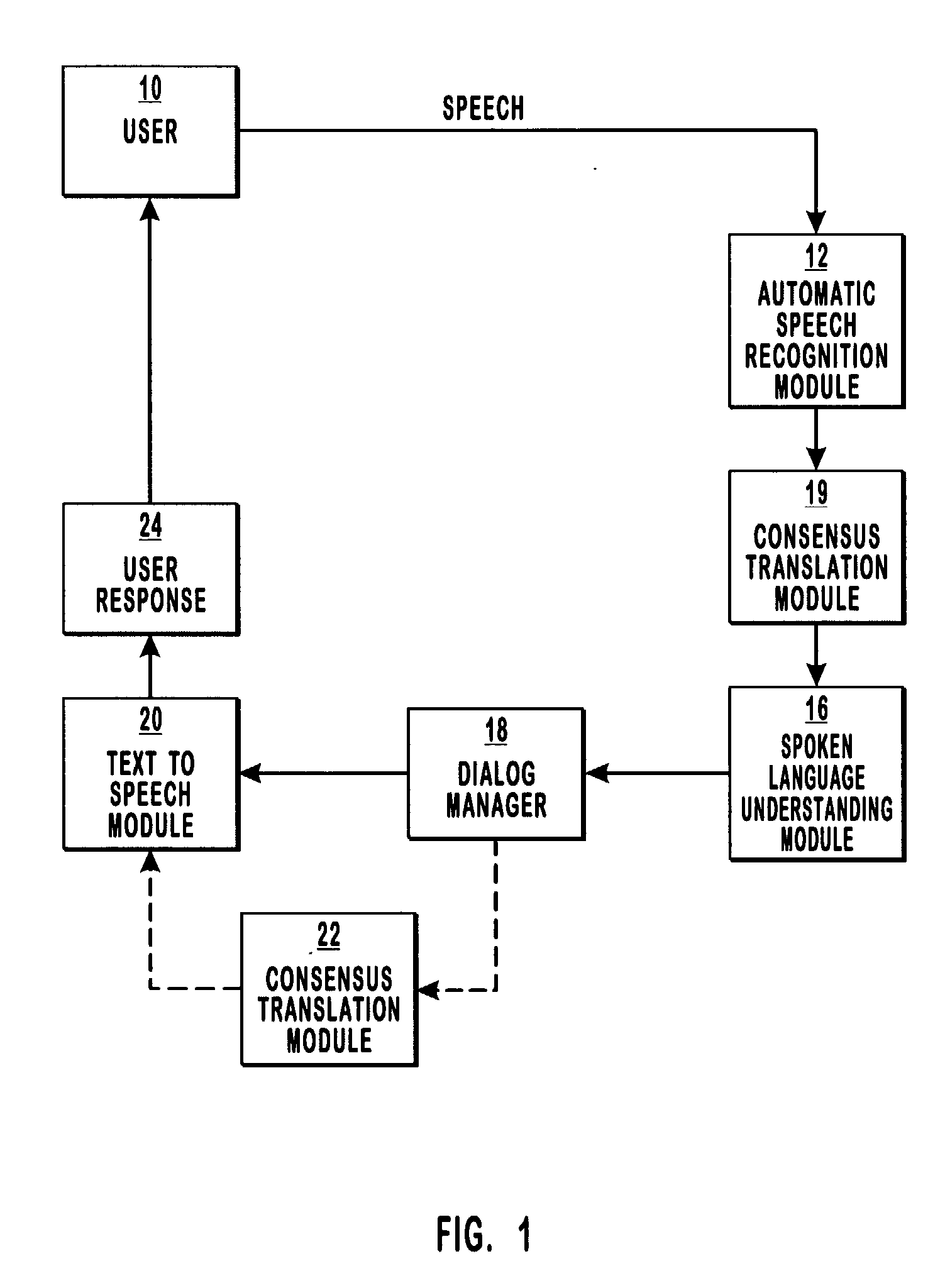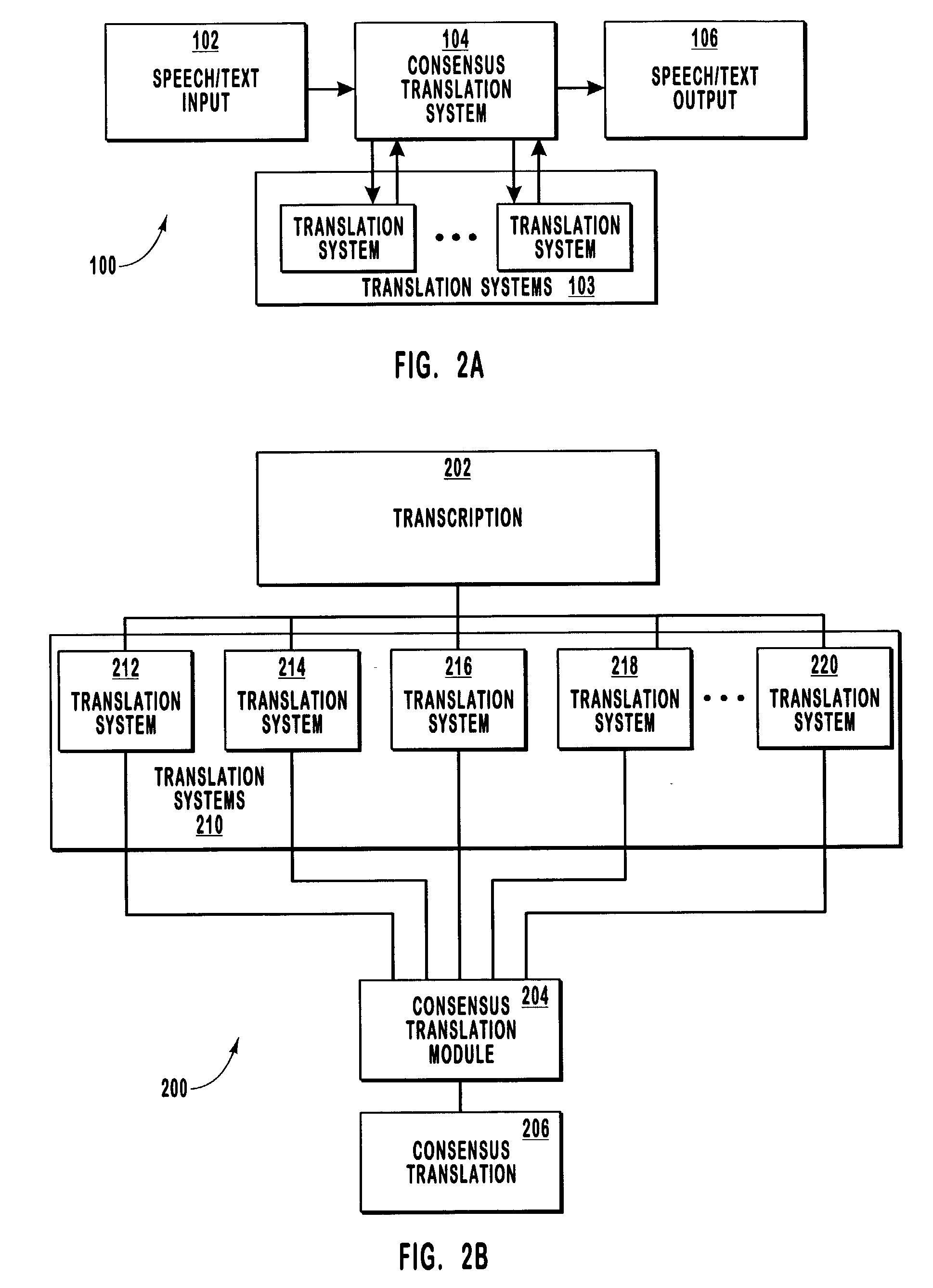Systems and methods for translating languages
a technology of systems and methods, applied in the field of systems and methods for translating languages, can solve the problems of affecting the translation efficiency of machine translation systems, affecting the translation efficiency of machines,
- Summary
- Abstract
- Description
- Claims
- Application Information
AI Technical Summary
Problems solved by technology
Method used
Image
Examples
Embodiment Construction
[0011] These and other limitations are overcome by the present invention which is directed to systems and methods for translating one language to another language by a "consensus translation," which is constructed from the translations produced by other translation systems. This approach takes advantage of the fact that the translation errors of one translation system are not related to the translation errors of the other translation systems. Thus, the outputs of the multiple translation systems can be processed to identify or determine a consensus translation, which is more accurate than that of the individual translation systems.
[0012] In one embodiment, the consensus translation is determined by first directing a transcription to various translation systems. A consensus translation is then extracted or constructed from the individual translations received from the various translation systems. The consensus translation is constructed, for example, by aligning the individual transl...
PUM
 Login to View More
Login to View More Abstract
Description
Claims
Application Information
 Login to View More
Login to View More - R&D
- Intellectual Property
- Life Sciences
- Materials
- Tech Scout
- Unparalleled Data Quality
- Higher Quality Content
- 60% Fewer Hallucinations
Browse by: Latest US Patents, China's latest patents, Technical Efficacy Thesaurus, Application Domain, Technology Topic, Popular Technical Reports.
© 2025 PatSnap. All rights reserved.Legal|Privacy policy|Modern Slavery Act Transparency Statement|Sitemap|About US| Contact US: help@patsnap.com



